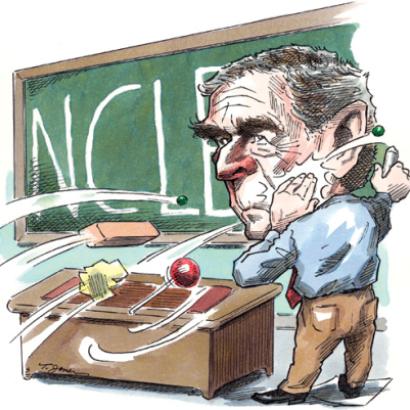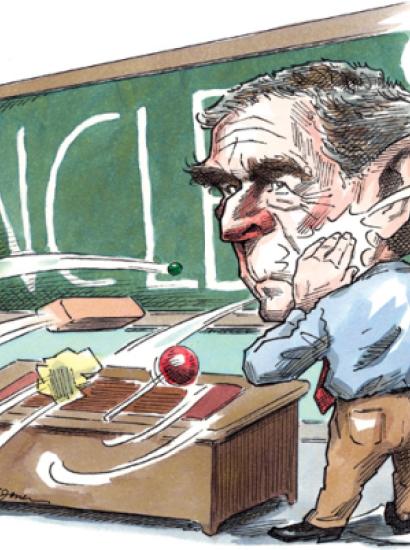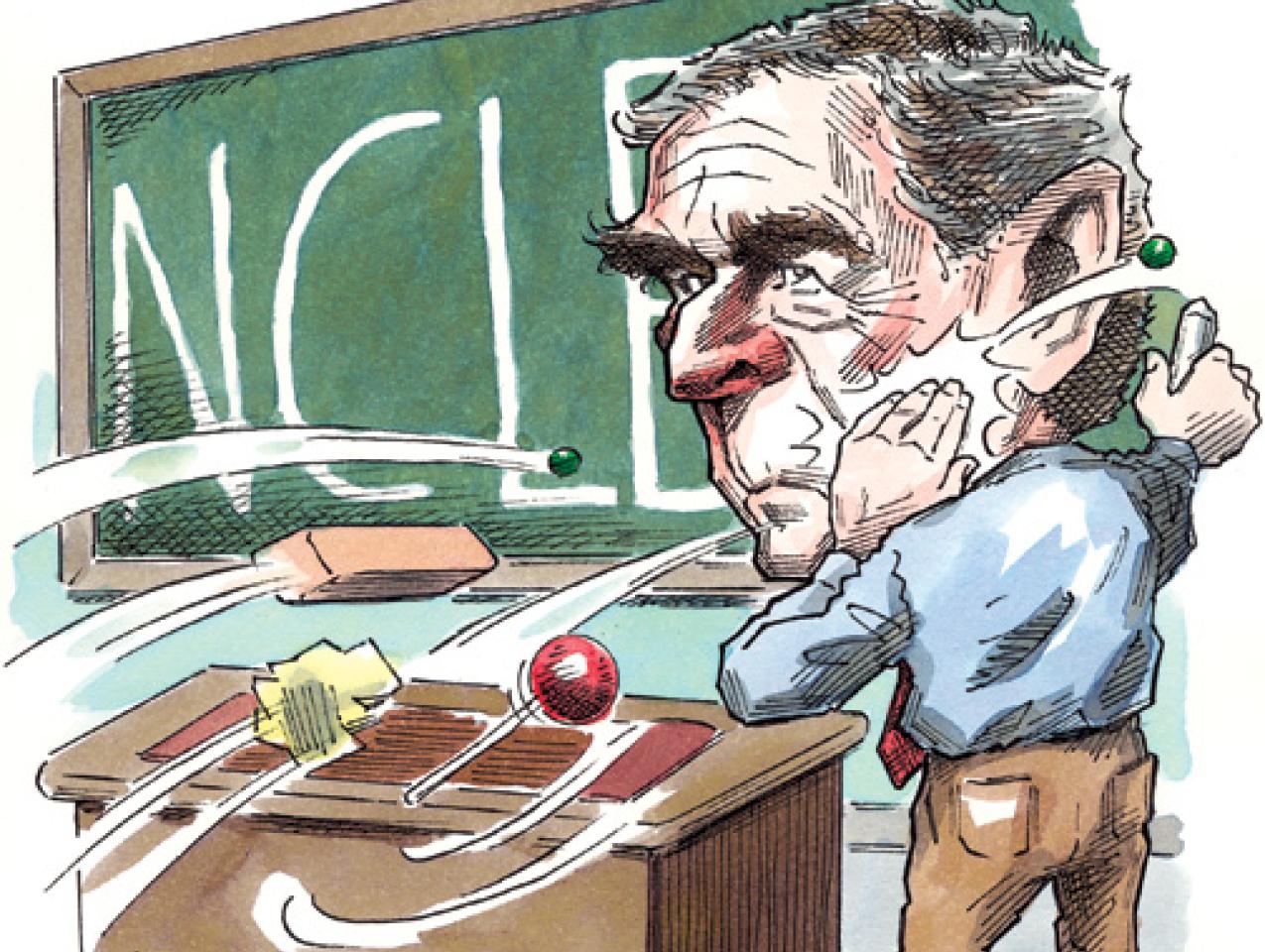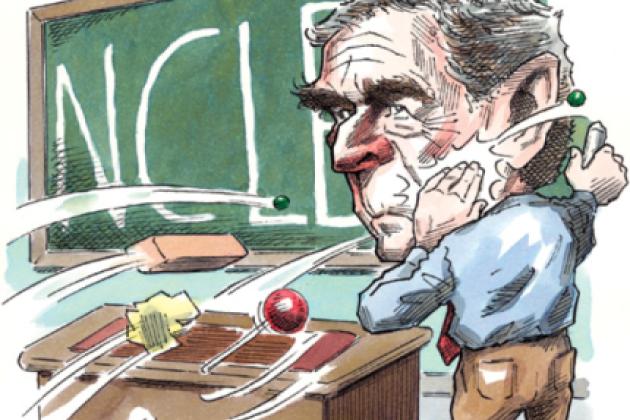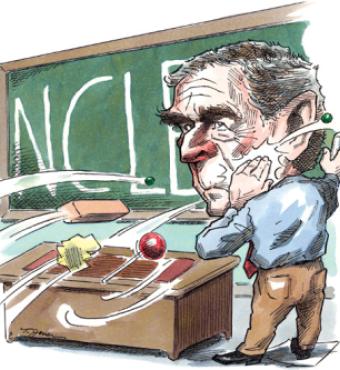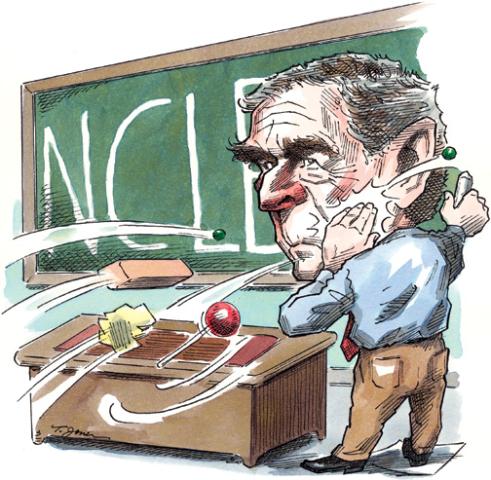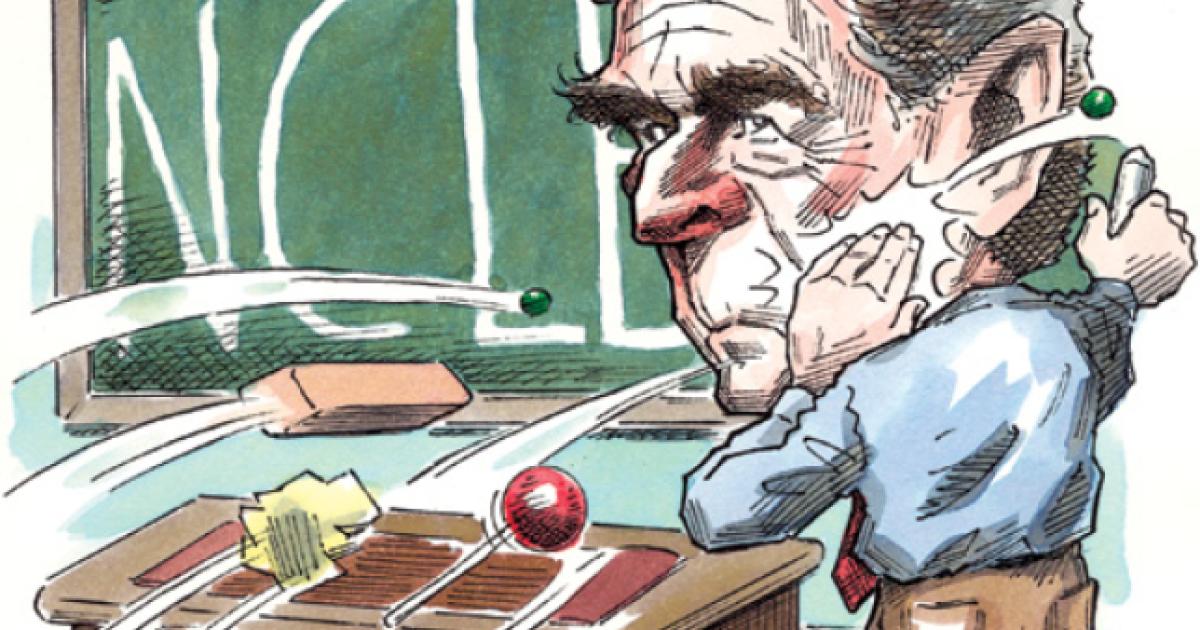- Education
- K-12
- Politics, Institutions, and Public Opinion
The No Child Left Behind (NCLB) Act, the sweeping legislation enacted six years ago to improve public schools, seems to make a lot of people unhappy. But President Bush, undaunted by the barrage of criticism aimed at this beleaguered measure by states, teachers unions, and politicians on both sides of the aisle, is pushing Congress to reauthorize it this year. Many Capitol Hill observers believe that it won ’t survive without the political clout a new president and Congress would bring—but after a starring role in five straight presidential elections, education is a bit player at best in the 2008 race. Could these widespread myths about No Child Left Behind have poisoned the well?
Myth: No Child Left Behind is an unprecedented extension of federal control over schools. This allegation comes most often from Republicans who, claiming that they voted for the legislation only out of courtesy toward Bush, have forgotten the bipartisan consensus that helped enact it. It ’s also a common complaint from state officials, who want fewer strings on their federal dollars.
But NCLB isn’t compulsory. States that don’t want to jump through its hoops are free to forgo their federal dollars. (Several, such as Utah, Nebraska, and Virginia, came close to doing just that, but the lure of those funds helped overcome their reservations.) The legislation isn ’t unprecedented, either—it’s just another incarnation of the Elementary and Secondary Education Act of 1965, one of President Johnson ’s Great Society monuments. That law’s centerpiece program, known as Title I, has pumped billions of federal dollars into education for poor children during the past forty-three years. And the Improving America ’s Schools Act, signed by President Clinton in 1994, was No Child Left Behind lite, with similar expectations for states and districts but fewer rules and time lines.
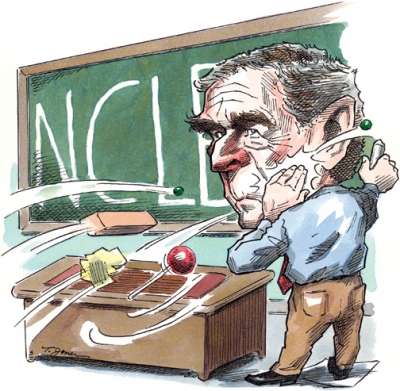
Myth: No Child Left Behind is egregiously underfunded. This charge comes mainly from Democrats, including liberal lions such as Massachusetts Senator Edward Kennedy and California Representative George Miller, who helped shape the law. It arises from the fact that NCLB, like almost every social program, was authorized at higher funding levels than have ever been —or are likely to be—appropriated. Viewed that way, nearly everything born in Washington is “underfunded.”
The costs of complying with No Child Left Behind—setting standards, testing children, publishing the results, and intervening in low-performing schools —are actually relatively modest. Instead of demanding more money for No Child Left Behind, critics should ask why states and local communities get such dismal returns on the half-trillion dollars, or nearly $10,000 per student, that they already spend on primary and secondary education every year.
Myth: Setting academic standards will fix U.S. schools. No Child Left Behind asks state governments to set standards in reading, math, and science —to identify basic skills that students should have mastered by a given grade level —and to test them accordingly. This follows an educational theory called standards-based instruction that says: state what children should know, measure their progress, and use rewards and punishments to help them succeed.
For this to work, of course, good standards must be in place, and NCLB doesn’t address the problem of mediocre or even downright silly standards. The compromises needed to pass NCLB left the law laid-back about standards yet fussy about what states and districts should do when those standards aren ’t met. The upshot is low expectations on one hand and too much micromanagement on the other. A few states, such as Massachusetts, California, and South Carolina, have taken their job seriously. But the majority either expect woefully little of their students and schools or have developed such nebulous standards that nobody —not parents, not teachers, not test makers—can make out what students are supposed to be learning.
Myth: The standardized testing required by No Child Left Behind gets in the way of real learning. Teachers’ animus toward standardized testing has many roots, chief among them the grueling weeks of preparation and exams that they and their students endure every year. But the accountability made possible by standardized testing isn ’t all bad. If the test is an honest measure of a solid curriculum, then teaching students the skills and knowledge they need to pass it is honorable work. Just ask any Advanced Placement teacher.
Myth: Certified teachers are better than noncertified teachers. Lawmakers blundered when they confused “qualified” with “certified” teachers. There’s no solid evidence that state certification ensures classroom effectiveness—and the booming success of programs such as Teach for America, which sends recent college graduates into troubled schools, suggests that certification may be wholly unnecessary. By requiring certified teachers in every classroom, No Child Left Behind makes it harder for district and charter schools to attract energetic and capable people who want to teach but have taken a less traditional route to the classroom.








